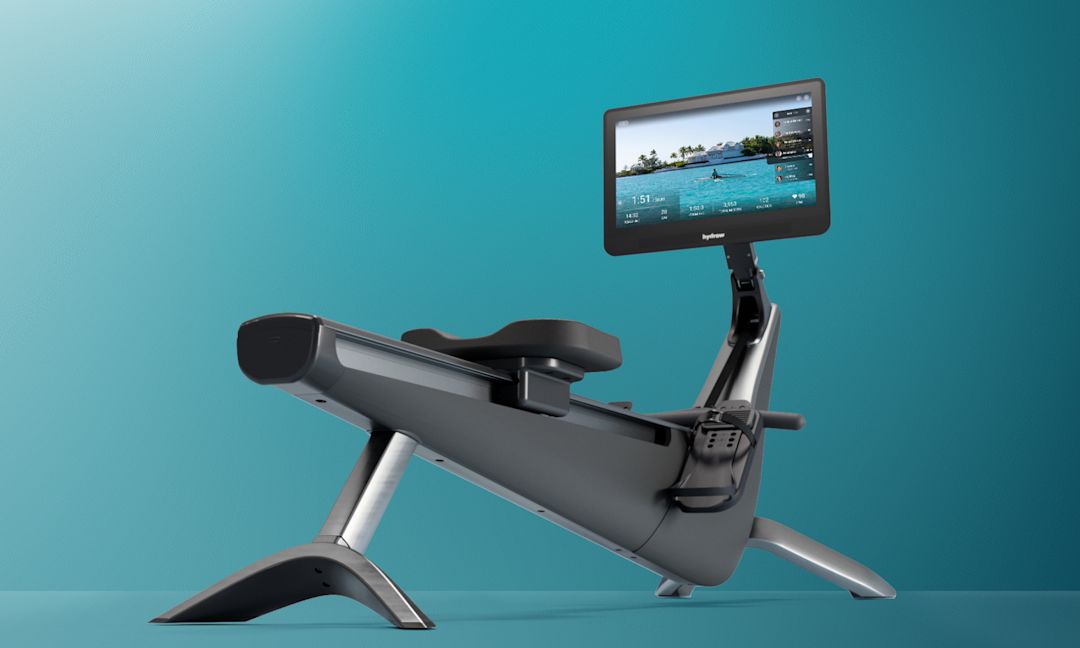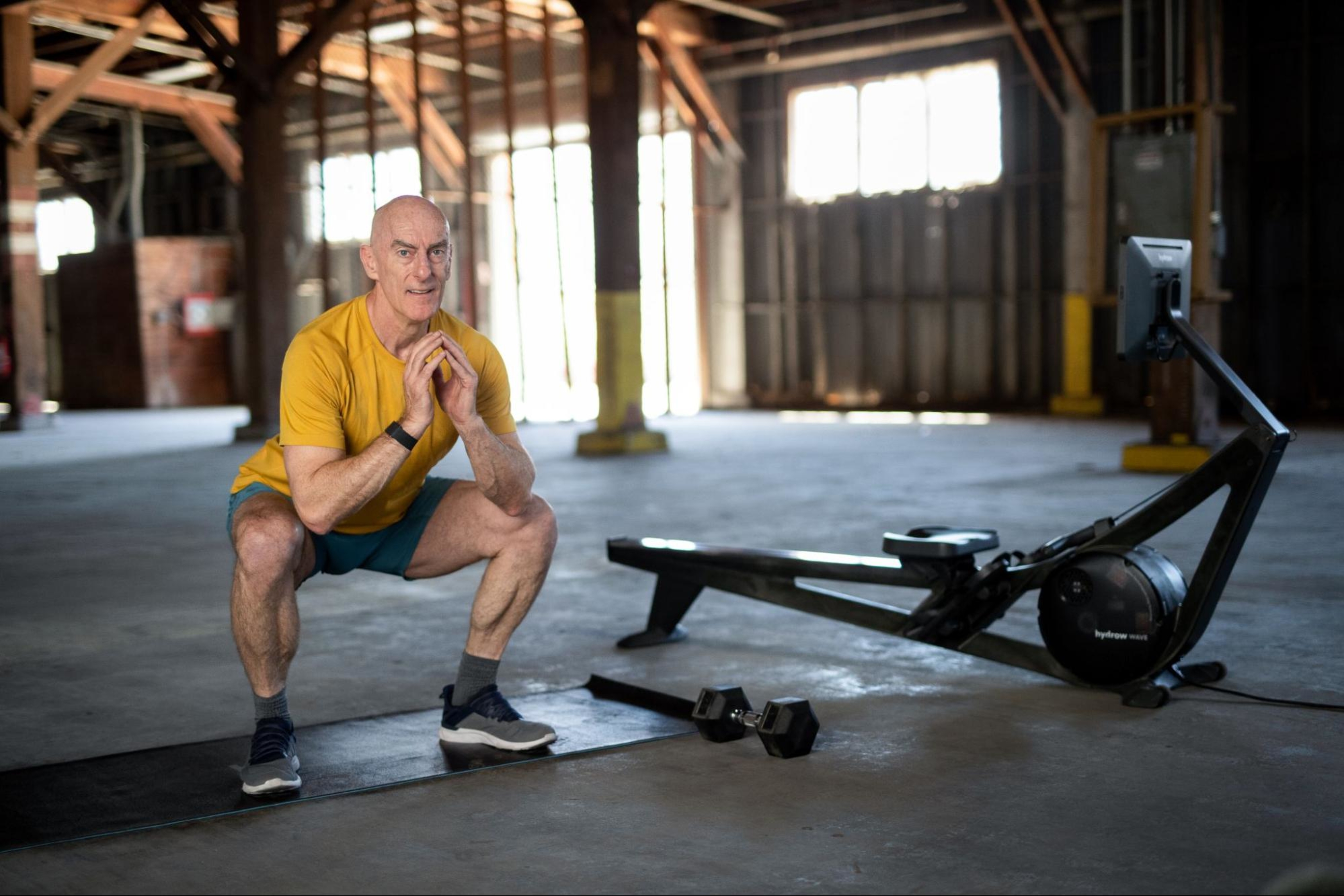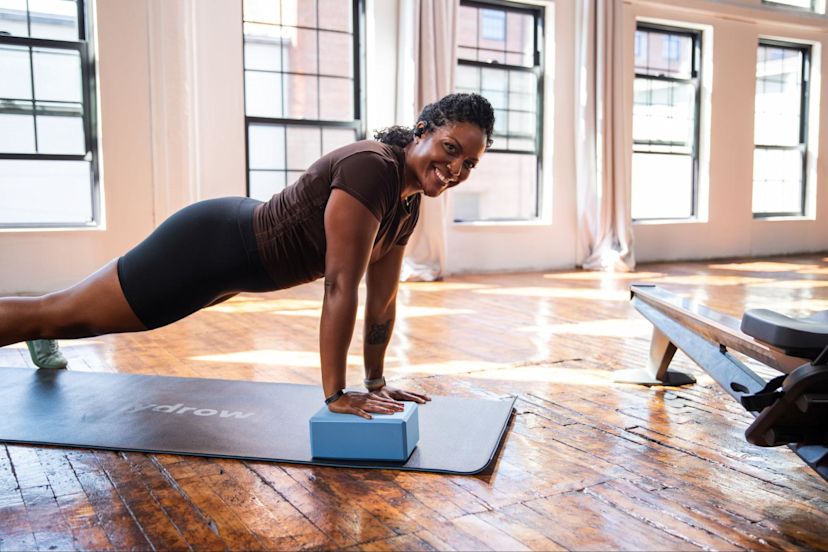How to Strengthen Your Core With Circuit Training: 12 Best Exercises

Do a quick internet search, scroll through YouTube, or even drive down the main drag in your city, and it will become clear that there are tons of different options when it comes to choosing a form of exercise. Some people swear by cardio, claiming the only piece of workout equipment they need is their sneakers. Others may go for a stroll every once in a while but are all about the weights, while others still spend all their time on the mat or on the dance floor.
That said, one form of exercise that is becoming increasingly popular is circuit training, thanks to the way it offers a total-body workout in a tight package. One part of the body that especially benefits from circuit training is your core, which we know is (literally!) the core and starting point of all strength and fitness.
Here, we’re detailing why circuit training is a smart choice for strengthening your core, plus sharing a core circuit training workout that you can do again and again.
Let’s dive in!
How circuit training strengthens your core
Circuit training, by definition, is actually a pretty broad category of exercise. In general, a circuit training workout has three key characteristics:
It incorporates both cardio and strength-building moves.
It works the entire body.
It consists of a series of exercises that you work all the way through, then repeat.
Circuit training can utilize weights, incorporate cardio or strength machines, or stick strictly to bodyweight and floor movements. Each exercise can be completed for a certain amount of time— say, 30 seconds—or for a certain number of reps. Ultimately, the goal of a circuit training workout is to increase your heart rate while working every muscle group in the body.

Holiday savings are here
Bring home our award-winning rowers at the best prices of the year.
Now, let’s talk about core circuit training. Circuit training can be adapted to strengthen the core in two different ways:
It’s possible to create an entire circuit training workout out of core-centric exercises by varying the abdominal muscles you are targeting (such as the obliques, rectus abdominis, transverse abdominals, and erector spinae).
You can build a circuit of bodyweight strength and plyometric movements that test your balance and stability while simultaneously working other muscle groups. By the end, you’ll have completed a total-body workout that also works your core.
In our opinion, the best core circuits are those that combine these two approaches, incorporating some core workouts for strength alongside plyometric moves that require you to engage your core while amping up your heart rate.
Related blog: Is Circuit Training Good for Weight Loss?
12 core circuit training exercises to add to your circuits
Ready to get started? Below is a core circuit training routine consisting of 12 different exercises that can be done with just your bodyweight (though weights can be added to some):
High knees
Reverse (or jumping) lunges
Push-ups
Forearm planks
Squat jumps
Lateral lunges
Dips
Bicycle crunches
Glute bridges
Side planks
Supermans
Burpees
1. High knees
What it works: Cardio, quads, glutes, and lower abs.
How it works the core: Pulling the knees up to the chest engages the lower abs, while the balance required to maintain a fast pace engages the transverse abs.
How to do it: Run in place as quickly as you can, pulling your knees up towards your chest and pumping your arms.
2. Reverse (or jumping) lunges
What it works: Quads, hamstrings, and glutes.
How it works the core: Any time you pick up one foot (or jump) to move to a different position, you utilize the core to maintain balance.
How to do it: Take a large step back with one foot and lower into a lunge, then step back in. Repeat with the other foot and continue to alternate. If you like, you can jump from one lunge, switching legs in the air and landing in the opposite lunge.
3. Push-ups
How it works the core: Maintaining a straight back and not letting your hips drop towards the floor as you lower uses the rectus and transverse abs.
How to do it: Place your hands on the floor directly under your shoulders and extend your feet back to come onto your toes (or your knees). Bend your elbows to lower your chest to the floor, keeping your body straight and your core engaged, then push back up.

Explore Hydrow’s library of Circuit Training workouts from around the world.
4. Forearm planks
What it works: Transverse abs, rectus abs, and glutes.
How it works the core: A plank is one of the best core exercises you can do—it works the entire core canister from every angle.
How to do it: From a push-up position, lower onto your forearms and hold, keeping your body straight and your elbows under your shoulders.
5. Squat jumps
What it works: Cardio, hamstrings, and glutes.
How it works the core: Jumping and landing safely requires stabilization from the core.
How to do it: Starting with your feet slightly wider than hip width, lower into a squat, then explode up and off the ground. Land back in a squat and repeat.
6. Lateral lunges
What it works: Quads, hamstrings, adductors, and abductors.
How it works the core: Moving laterally is a less comfortable range of motion for many people, so it requires additional stability and balance through the core.
How to do it: Take a large step out to the side, bending your knee and sending your hips back while keeping the opposite leg straight, then step back in. Repeat with the other foot and continue to alternate.

Did you know?
Over 90% of Hydrow members are still active one year later.
7. Dips
What it works: Triceps.
How it works the core: When you’re doing dips on the floor, like we suggest here, you’re using your lower abs to keep your hips lifted.
How to do it: Sit on the floor with your feet flat and hands flat just behind your hips. Press your hips up off the ground, then bend your elbows to lower your butt towards the floor. Push back up and repeat.
8. Bicycle crunches
What it works: Obliques.
How it works the core: The lifting and twisting required in bicycle crunches powers up the obliques.
How to do it: Lying on your back with your hands behind your head, lift up your head, neck and shoulders and bring your legs to a tabletop position. Extend your right leg out straight and twist your right elbow toward your left knee, then switch. Continue to alternate.
9. Glute bridges
What it works: Glutes, hamstrings, and lower back.
How it works the core: The erector spinae, or lower back, is an oft-overlooked part of the core, but it’s just as important as the front muscles for providing stability for the spine.
How to do it: Lie on your back with your knees bent and feet flat. Curl your pelvis under and press your heels into the floor to lift your hips to the ceiling, all while maintaining an engaged core. Lower back down and repeat.
10. Side planks
What it works: Obliques and transverse abs.
How it works the core: Like forearm planks, side planks are all about the core.
How to do it: Come onto your side on the floor, propping your elbow right underneath your shoulder and stacking your feet on top of one another (you can also stagger your feet or drop your bottom knee to the floor). Lift your body off the floor and hold, maintaining a straight line from your shoulder to your feet.
11. Supermans
What it works: Lower back and glutes.
How it works the core: Lifting your body from this position relies on the erector spinae, while pulling in your lower abs mid-move makes things easier.
How to do it: Lie on your stomach with your arms and legs outstretched. Engage your core and glutes and lift your legs and upper body off the floor simultaneously, then lower back down. Repeat.

Explore Hydrow’s library of 5,000+ rowing, circuit training, yoga, Pilates, and mobility workouts.
12. Burpees
What it works: Cardio, quads, hamstrings, arms, chest, and core.
How it works the core: This very dynamic, high-energy move requires a great deal of core strength and balance to get down to the floor and back up again.
How to do it: From standing, place your hands down on the floor and jump your feet out behind you. Lower your chest to the floor then push back up, jump your feet in, and stand back up. Repeat.
You can pick and choose your favorites to add to your own circuit training workout or complete them all as one routine. We suggest doing each move for 30 seconds, back to back, for a total of six minutes straight of work, then taking one minute to rest.
Complete the circuit twice more, with another minute of rest in between, for a full-body workout that takes just 20 minutes and can be done anywhere.
Doing circuit training exercises to strengthen your core
The ultimate key to core circuit training is actually quite simple: Think about your core. Throughout your entire workout, regardless of the exercise you are doing, think about keeping your abs pulled in, your ribs closed, and your pelvis tucked under. This will help you maximize your workout for core toning and strengthening, no matter what move you’re doing.
Looking for more guidance? Hydrow’s library offers a variety of circuit workouts designed to challenge every muscle and boost your endurance. Each session is led by a world-class Athlete who provides clear, motivating guidance to help you get the most from every movement.
Explore Hydrow’s circuit training workouts and take your fitness further.

Real strength keeps moving
Learn how working out with Hydrow can help support a fuller, more active life.






